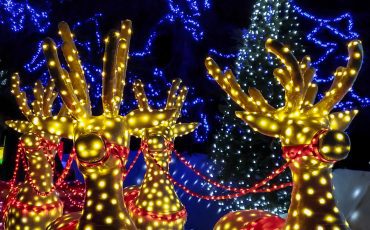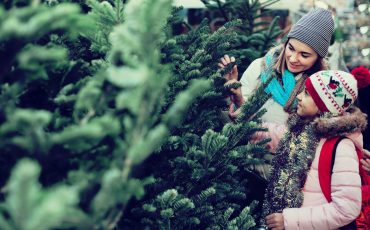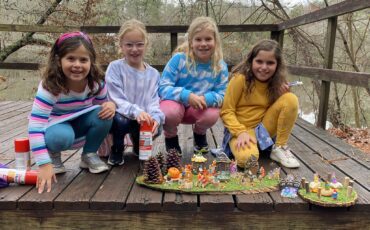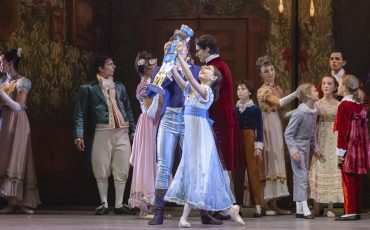14 Ways to Celebrate an Old-Fashioned Christmas

Celebrate the holidays by bringing back these toys, crafts, treats and traditions.
Table of Contents
Gingerbread Houses
The German Brothers Grimm popularized this tradition with “Hansel and Gretel.” You can always buy the gingerbread house kits, but this year, try something new by making one out of a milk carton. The milk carton becomes the base for the house. “Glue” graham crackers to the carton with icing, and decorate with icing, candy, cereal, candy canes, gumdrops, marshmallows and more.
Christmas Lights
In 1882, Edward Hibberd Johnson strung bulbs around a Christmas tree. Now, 150 million light sets are sold each year. This year, decorate your tree with bubble lights, which were popular from the 1940s to the 1970s. Find them at Walmart, Ace Hardware or on Amazon and Novelty Lights.
Christmas Cards
The first recorded use of “Merry Christmas” was sent in a Christmas letter in 1534. Sending Christmas cards as a tradition started in 1843. Sir Henry Cole, who had set up the Public Record Office, which became the Post Office, wanted it to be used more often by regular people.
Decorate Christmas cards with potato stamps. Halve a potato and pat the cut ends dry with a towel. Press a cookie cutter into the cut end of the potato half, creating an outline. Use the knife to cut into the potato and remove the parts around the cutter. Remove the cutter. Kids can paint the stamp by pressing it into plates covered with paint or using a paintbrush to load the stamps with paint.
Yule Log
The burning of the Yule Log dates to before medieval times with Nordic traditions at Winter Solstice festivals. In 1966, Americans tuned in to watch a 17-second loop of a fireplace along with holiday music in New York City. Now, you can view the log with streaming services. A Chocolate Yule Log is a popular Christmas dessert traditionally eaten in France and Belgium. Make your own with this recipe from hersheys.com.
Garlands
The first garlands were brought to America from Europe as a symbol of Christianity. The circular shape represented the infinite love of Jesus, while holly signified the crown of thorns worn during the crucifixion and the blood spilled. You can easily decorate your whole house with garlands. Make decorative garland with different colored construction paper. Fold the paper accordion style, and sketch out your desired shape: snowmen, Christmas trees, Santa’s hat, snowflakes. Cut out the shape, making sure to leave one part of the folded paper connected. When it’s unfolded, you have an easy strand of décor.
Bring the Holidays to the Birds
In the classic “12 Days of Christmas,” the true love gifts a partridge, turtle doves, French hens, calling birds, geese and swans. Make a treat for them by stringing popcorn and cranberries on yarn, ribbon or twine for a decoration you can place on the bushes or trees.
Create bird seed ornaments using pinecones. Tie string around the pinecone, spread nut butter over it and roll it in birdseed. Hang it on a tree branch, making sure there’s another branch nearby for the bird to sit on while eating.
Advent Calendar
From the early 19th century, German Protestants marked the days of Advent by burning a candle or marking walls with a line of chalk each day. Hanging images led to the creation of the first wooden Advent calendar in 1851. Create an easy calendar and countdown to Christmas with a paper garland. Using red and green construction paper, cut even-sized strips. Coil the strip together to create a circle, and glue, staple or tape the ends. Continue the pattern, alternating the colors to create a patterned garland with 25 loops. Each day take off a loop to represent the days until Christmas.
Ornaments
In 1605, a tree in Strasbourg was brought indoors and decorated with roses, candles, wafers, nuts and sweets. Later decorations included painted eggshells, cookies, candies and tinsel. Make delightful smelling ornaments using cinnamon.
- ¾ c. applesauce
- 2 bottles ground cinnamon
- Cookie cutters
- Drinking straw
- Colorful ribbon
Preheat oven to 200°. Mix applesauce and cinnamon in a small bowl until a smooth ball of dough is formed. Using about a quarter of the dough at a time, roll dough to ¼” to ¹/³” thickness between two sheets of plastic wrap. Peel off top sheet of plastic wrap. Cut dough into desired shapes with 2″ to 3″ cookie cutters. Make a hole at the top of ornament with drinking straw. Place on baking sheet.
Bake 2½ hours. Cool on wire rack.
Insert ribbon through holes and tie to hang. If desired, decorate with opaque paint markers.
Candy Canes
One story about candy canes dates them back to 1670 when a choirmaster in Germany handed out sugar sticks to keep his singers quiet during the ceremony. At some point, a hook was added to the stick, which some say was to resemble a staff for religious reasons, while others believe it was to make them easier to hang from trees. When they made their U.S. debut in 1847, candy canes were only white, and it wasn’t until the 20th century that red stripes were added.
Make candy canes even sweeter by using them as a stirrer for your hot chocolate, or breaking them up to add to ice cream, cookies or white chocolate bark. Use the hook to hang them from your tree for an old-fashioned way to decorate.
Candles
Candles are used in numerous holiday traditions:
- In the Middle Ages, a large candle was lit to represent the star of Bethlehem.
- Candles in the windows were brought over by the Irish, as the British government restricted the practice of Catholicism in the mid-17th to late 18th centuries. Catholic families would leave a candle burning to let the priest know he was welcome.
- Advent wreaths symbolize the passage of the four weeks of advent, with each candle being lit every week until the last Sunday before Christmas. Some traditions include a fifth candle lit on Christmas Eve or on Christmas.
- Early luminaria were small bonfires built in three-foot high squares. The hope among Roman Catholics is that the lights would guide the spirit of Christ to one’s home. Another form of luminaria is carried by the leader of the Las Posadas procession, a holiday from Dec. 16-24. Make your own with brown paper bags, dry sand and votive-sized candles. Pour sand into each bag and place a candle in the sand, anchoring it upright.
Christmas Trees
Decorated trees date back to Germany in the Middle Ages, and Christmas trees were popular in America by the early 19th century. This year, why not head to a nearby farm to pick out a real Christmas tree?
Holiday Movies
Make it a point to watch these classic movies this year.
- A Christmas Carol: The first film adaptation of Charles Dickens’ 1843 Christmas novella was released in 1901. The story has been adapted for theatre, film, television, radio and ballet.
- It’s a Wonderful Life: This 1946 movie became a holiday favorite in the ‘80s, due to repeated showings on TV. In 1990, the film was added to the National Film Registry of the Library of Congress.
- Miracle on 34th Street: Released in 1947, this story takes place between Thanksgiving Day and Christmas Day in New York City, as a Macy’s department store Santa claims to be the real Kris Kringle.
- Rudolph the Red-Nosed Reindeer: This 1964 stop motion animated TV special aired on Dec. 6 and was based on the 1939 poem which turned into a song. The special has been telecast every year since then, making it the longest continuously running Christmas special.
- A Charlie Brown Christmas: This animated special debuted on Dec. 9, 1965. This year you can watch the special on Apple TV for free from Dec. 16-17.
- How the Grinch Stole Christmas!: This television special was originally shown on CBS on Dec. 18, 1966 and was based on the 1957 book by Dr. Seuss. The animated story features the voice of Boris Karloff as the Grinch and the narrator.
- A Christmas Story: Released in 1983, this comedy was based on Jean Shepherd’s semi-fictional anecdotes in his 1966 and 1971 books. A marathon of the film has aired on TNT or TBS since 1997.

Hardman Farm Historic Site
Experience Some Old-Fashioned Fun
Victorian Christmas at Hardman Farm Historic Site. See the mansion dressed in period holiday décor, and learn about Victorian Christmas traditions from the 1870s. Dec. 1-3, 8-10 and 15-16.
Holiday Spirit at Oakland Cemetery. Explore decorated mausoleums, go on mini tours, enjoy photo opportunities with Santa, and make your own ornament. Dec. 2-3.
Holidays on the 1860’s Home Front at Pickett’s Mill Battlefield Historic Site. Experience holiday decorating and festivities of the past. Dec. 16.
Toys Through the Years
- 1900s: Lionel’s Toy Trains
- 1910s: Gund
- 1920s: Lincoln Logs
- 1930s: Monopoly
- 1940s: Slinky; Tonka
- 1950s: Fisher-Price Little People; Barbie
- 1960s: Operation; Lite-Brite; Hot Wheels
- 1970s: Nerf; Connect Four
- 1980s: My Little Pony; Care Bears
- 1990s: Beanie Babies







